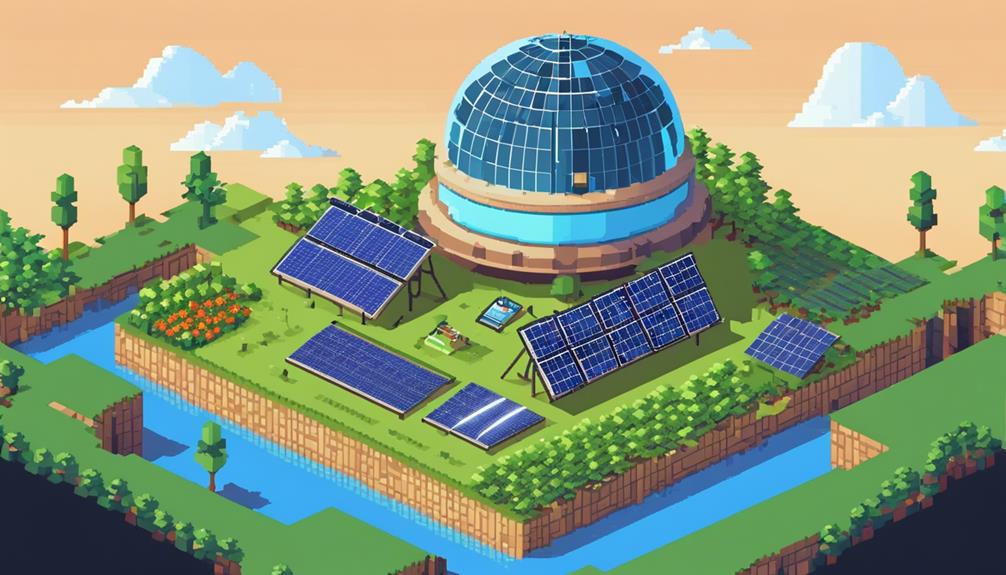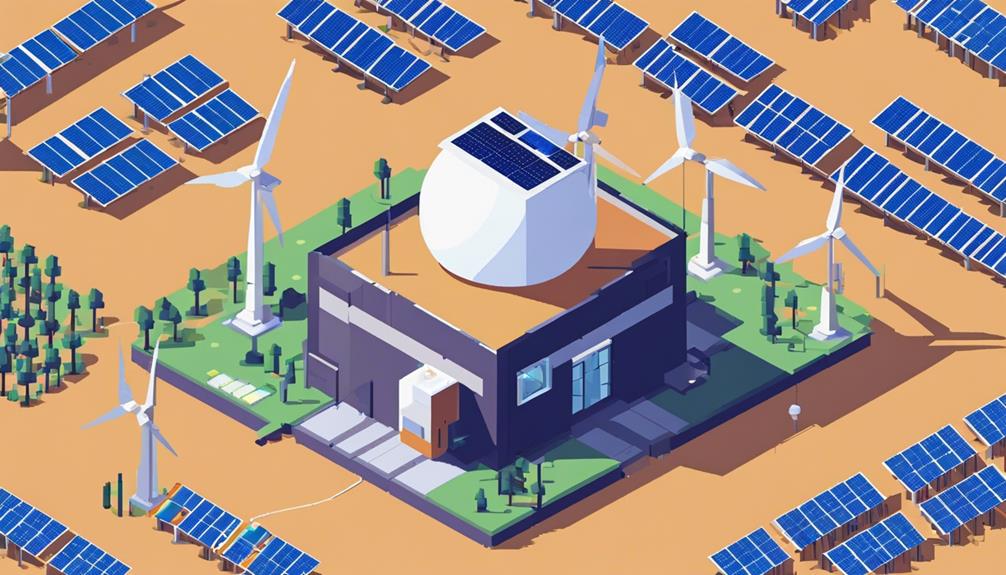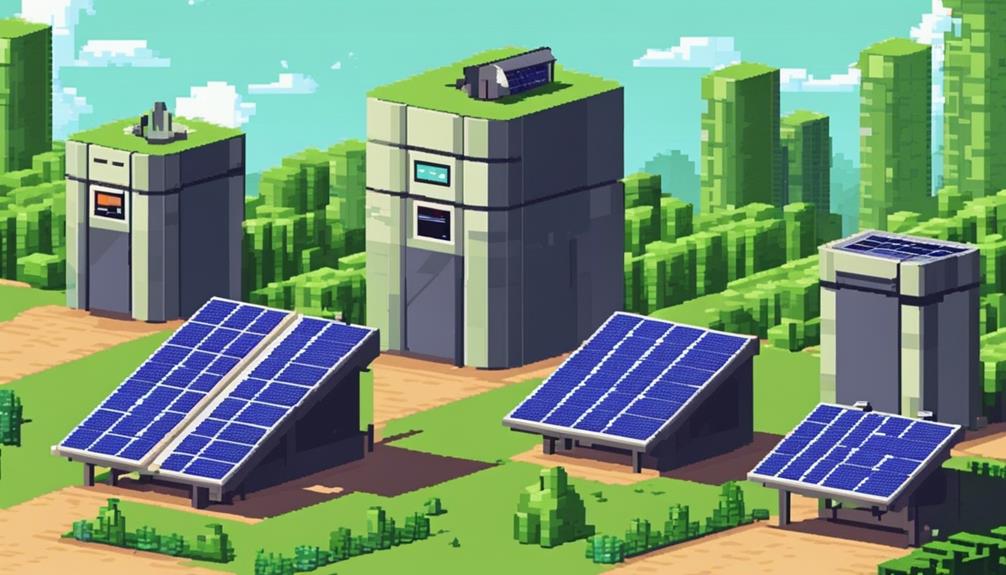In the realm of ground station operations, the imperative to mitigate environmental impact looms large. By honing in on sustainable methodologies like leveraging renewable energy sources, curbing e-waste, and shielding ecosystems from light pollution, a significant shift towards eco-conscious practices can be achieved. The adoption of solar and wind power, alongside the phasing out of outdated equipment, offers promise in diminishing the ecological footprint of ground stations. However, the quest for reducing environmental repercussions extends beyond energy considerations, encompassing nuanced strategies like responsible site selection and innovative technologies for minimizing ecological disturbances.
Key Takeaways
- Responsible site selection minimizes habitat disruption near ground stations.
- Adoption of renewable energy sources like solar power reduces environmental impact.
- Minimizing light pollution from ground stations helps preserve dark skies.
- Utilization of recyclable and eco-friendly materials in station construction promotes sustainability.
Environmental Impact of Ground Stations

Ground stations exert a significant environmental impact through habitat disruption and fragmentation, affecting local ecosystems. These stations, crucial for satellite communication and global coverage, play a vital role in modern technology but can have detrimental effects on the environment. The construction and operation of ground stations can lead to habitat disruption, biodiversity loss, and wildlife disturbance if not managed carefully. To mitigate these impacts, responsible site selection is essential. Choosing locations that minimize interference with natural habitats and ecosystems is crucial for reducing the environmental footprint of ground stations.
In addition to site selection, ground stations can adopt renewable energy sources like solar and wind power to lessen their environmental impact. By transitioning to cleaner energy alternatives, ground stations can reduce their carbon footprint and contribute to sustainability efforts. Furthermore, minimizing light pollution from these stations is imperative for preserving natural habitats and protecting nocturnal wildlife.
Real-time monitoring of environmental parameters around ground stations can help identify and address any ecological issues promptly. By implementing effective monitoring systems, operators can ensure that their stations operate in harmony with the surrounding environment. Overall, through responsible site selection, renewable energy adoption, light pollution mitigation, and real-time monitoring, the environmental impact of ground stations can be significantly reduced.
Space Debris Concerns
Space debris poses a critical threat to active satellites and the International Space Station as a result of potential collisions. Responsible disposal practices are crucial to mitigating these risks, especially with the increasing number of satellite launches contributing to the generation of space debris. To address this concern, various technologies such as nets, robotic arms, and in-orbit servicing are being developed for debris removal. These advancements in debris removal technologies are essential for ensuring the long-term sustainability of space activities.
The collision risks posed by space debris highlight the importance of effective space debris management. By implementing responsible disposal practices and investing in debris removal technologies, the space industry can minimize the impact of space debris on operational satellites and space stations. In-orbit servicing missions utilizing robotic arms can play a significant role in removing defunct satellites and other debris from critical orbits.
Sustainable space activities require proactive measures to address the challenges posed by space debris. Ensuring the responsible disposal of satellites and developing innovative debris removal technologies are vital steps towards enhancing the overall sustainability of space operations. By prioritizing these efforts, the space industry can promote safe and sustainable practices for future space exploration.
Energy Consumption Reduction

Transitioning to renewable energy sources such as solar and wind can significantly reduce energy consumption in ground station operations. By incorporating solar panels and wind turbines into ground station facilities, energy can be harnessed from natural sources, leading to a decrease in reliance on traditional energy grids. To further optimize energy consumption reduction, ground stations can implement the following strategies:
- Upgrade to Energy-Efficient Equipment: Replacing older, energy-intensive equipment with newer, more energy-efficient models can result in substantial energy savings over time.
- Implement Smart Energy Management Systems: Utilizing smart energy management systems can automate energy monitoring and optimize energy usage in real-time, ensuring that energy is used efficiently.
- Monitor and Optimize Energy Usage: Regularly monitoring energy consumption patterns can help identify areas where energy conservation measures can be implemented, leading to reduced energy waste.
- Utilize Renewable Energy Sources: Investing in solar panels and wind turbines can not only reduce carbon emissions but also provide a sustainable source of energy for ground station operations, contributing to long-term energy optimization efforts.
Sustainable Satellite Design Solutions
Sustainable satellite design solutions encompass strategies such as energy-efficient satellite design and the use of materials that promote sustainability. By implementing these measures, satellites can reduce their carbon footprint and minimize environmental impact throughout their lifecycle. These approaches aim to enhance the overall environmental stewardship of satellite technology by prioritizing energy efficiency and eco-friendly practices.
Energy-Efficient Satellite Design
Efficient satellite design solutions are pivotal in minimizing energy consumption and environmental impact within ground station operations. When focusing on energy-efficient satellite design, the following key strategies are crucial:
- Integration of solar panels for renewable energy generation.
- Utilization of efficient propulsion systems to reduce fuel consumption.
- Implementation of smart power management systems for optimized energy usage.
- Adoption of lightweight materials to enhance overall energy efficiency.
These measures are essential in reducing carbon emissions and decreasing the ecological footprint of satellites, ultimately contributing to the sustainability of ground station operations. By embracing innovative technologies and sustainable practices, energy-efficient satellite design plays a vital role in mitigating the environmental impact associated with satellite operations.
Materials Sustainability Measures
In the realm of satellite design solutions, a paramount focus lies on the utilization of recyclable materials to curtail environmental impact and enhance sustainability. Materials sustainability measures in ground station construction aim to minimize the use of hazardous substances, opting instead for eco-friendly and recycled materials like aluminum and composite materials. By incorporating these environmentally friendly materials, the goal is to promote long-term sustainability, reduce waste generation, and increase the durability of equipment. This shift towards sustainable satellite design solutions not only benefits the environment but also ensures that ground station components are built to last, contributing to a more efficient and eco-conscious satellite infrastructure.
| Sustainability Measure | Description |
|---|---|
| Hazardous substances | Minimize use in ground station construction |
| Eco-friendly materials | Promote long-term sustainability and waste reduction |
| Recycled materials | Utilize aluminum and composite materials |
| Durable equipment | Enhance durability and environmental friendliness |
Light Pollution Mitigation Strategies

To address the challenges posed by the increasing brightness of satellite constellations, innovative technologies and strategic planning are being employed to mitigate light pollution from ground stations. This proactive approach is crucial for minimizing the disruptive effects of artificial light on astronomical observations, ecosystems, and the well-being of nocturnal wildlife. Here are some key strategies being implemented:
- Developing Advanced Shielding Technologies: Research is focused on creating shields and filters that can reduce the visibility of satellite constellations from Earth without compromising the functionality of ground stations.
- Implementing Light-Efficient Designs: Ground stations are being designed with a focus on directing light downwards and utilizing energy-efficient lighting to minimize light pollution and reduce the impact on surrounding ecosystems.
- Utilizing Remote Sensing for Monitoring: Remote sensing technologies are being leveraged to monitor light emissions from ground stations continuously, allowing for prompt adjustments to minimize light pollution levels.
- Collaborating for Dark Sky Preservation: Partnerships with conservation organizations and local communities are being forged to promote responsible site selection, ensuring that ground stations are located away from dark sky areas to preserve the natural beauty of the night sky.
Renewable Energy Implementation
Ground stations can decrease their environmental footprint by adopting renewable energy sources such as solar and wind power to power their operations efficiently and sustainably. Solar panels are a common feature in renewable energy implementation at ground stations, allowing the conversion of sunlight into electricity for various operational needs. Similarly, wind turbines can be strategically installed to generate clean energy and reduce reliance on traditional power sources, further enhancing sustainability efforts.
Integrating energy storage systems with renewable sources is crucial to ensuring a continuous power supply, especially during periods of low sunlight or wind. This seamless transition to renewable energy not only optimizes power efficiency but also significantly reduces carbon emissions associated with ground station activities, promoting a greener approach to satellite operations. By embracing renewable energy technologies, ground stations can play a pivotal role in mitigating environmental impact and advancing sustainability in the realm of satellite communication. This shift towards renewable energy signifies a proactive step towards minimizing the carbon footprint and fostering a more eco-conscious approach within the satellite industry.
Frequently Asked Questions
What Is the Environmental Impact of Space Debris?
The environmental impact of space debris encompasses a range of issues including waste management, pollution prevention, and carbon footprint. Space debris poses risks to satellites, increasing the need for sustainable practices and eco-friendly technology. Recycling efforts and green initiatives play vital roles in mitigating this impact. Compliance with environmental regulations is crucial for biodiversity conservation and climate change mitigation in the face of the challenges posed by space debris.
How Do Satellites Affect the Atmosphere?
Satellites impact the atmosphere through emissions like greenhouse gases, affecting air quality, contributing to climate change, and potentially depleting the ozone layer. As a critical aspect of satellite technology, understanding these effects is crucial for complying with environmental regulations and minimizing the carbon footprint of space activities. Implementing sustainable solutions is imperative to mitigate these atmospheric impacts and ensure responsible space operations.
What Is the Future of Satellites?
The future of satellites is characterized by advancements in satellite technology, orbital sustainability, and space exploration. Satellite innovation is driving improvements in communication networks, Earth observation, remote sensing, and satellite constellations. The space industry is witnessing increased satellite launches for various applications, emphasizing the importance of collaborative efforts to ensure long-term access to space resources and sustainability in satellite operations.

